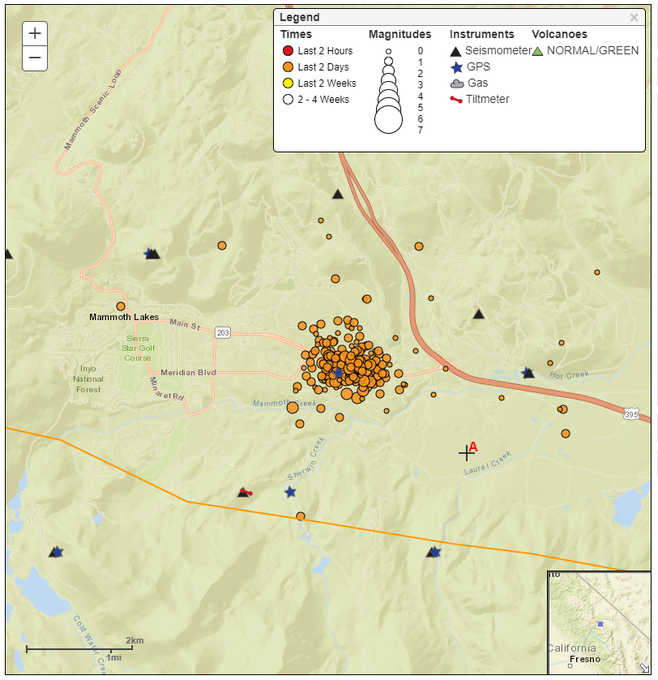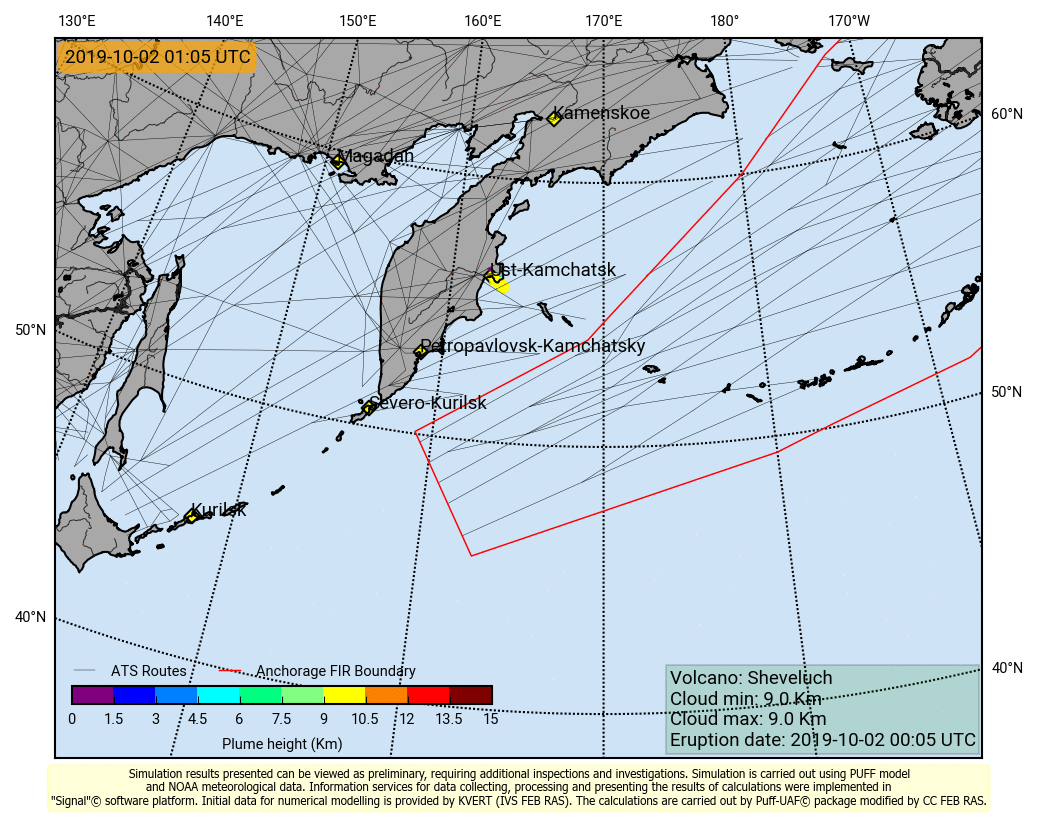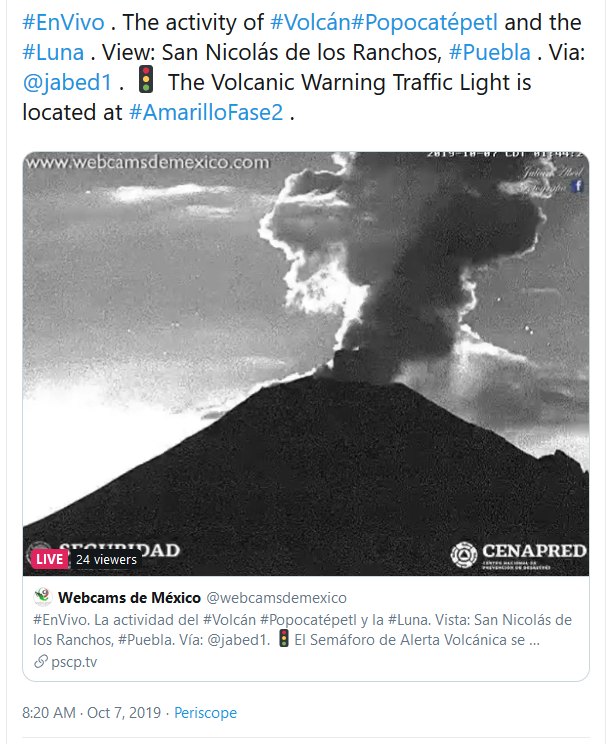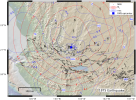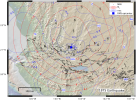Figure 6
Results of the inversion of the macroseismic data for the 1875 earthquake in the western part of the Trans‐Mexican Volcanic Belt. The best fitting magnitude is MI 7.2. Symbols shown are as in Figure 3. Abbreviations of cities: TE, Tepic; GDL, Guadalajara; CO, Colima; AG, Aguascalientes; Z, Zacatecas; MO, Morelia; G, Guanajuato.
The city of Guadalajara is located 45 km to the southeast of the town of San Cristobal de la Barranca. Despite the distance, the earthquake was very strongly felt and damaged many houses and buildings in the city. Archival records document large cracks and openings in walls, displaced vaults, and columns and small collapses in several churches: the Cathedral, Aranzazú, La Merced, Santa Mónica, and Mexicalzingo (García‐Acosta & Suárez, 1996). No major damage was sustained in public buildings, although several private houses were damaged also.
...
Historical Earthquakes in the Central Part of the TMVB
The 19 June 1858 Earthquake
In the morning of 19 June 1858, a large earthquake was felt over a very large area of central Mexico, causing severe damage in many inland towns and cities. The
19 June event is known as the St. Juliana earthquake, following the tradition of naming large and destructive shocks after the saint celebrated on that day. Most of the damage was concentrated inland in the state of Michoacán, about 200 km from the subduction zone and to the west of Mexico City. The most affected localities were those near the capital city of Morelia, within the TMVB (Figures 7 and 8).
Figure 8
Results of the inversion of the macroseismic data for the 1858 earthquake in the central part of the Trans‐Mexican Volcanic Belt. The best fitting magnitude is
MI 7.6. Symbols shown are as in Figure 3. Red star is the epicenter proposed by Singh et al. (1996). Abbreviations of cities are CU, Cuernavaca; DF, Mexico City; P, Puebla, Q, Queretaro; MO, Morelia; PAT, Patzcuaro; other abbreviations as in previous figures.
The earthquake was felt also very strongly in Mexico City, where some buildings and churches suffered damage. Gómez de la Cortina (1859) witnessed the earthquake in Mexico City and reports that it was one of the stronger events ever felt in the city. He points out, however, that during the 1858 event, the intensity and duration of the strong shaking were less than those observed during the 7 April 1845 earthquake, a large subduction earthquake in the Guerrero gap to the south of Mexico City (Nishenko & McCann, 1981; Nishenko & Singh, 1987; Singh et al., 1984).
...
The Macroseismic Data of the Santa Juliana Earthquake
The more important and widespread damage was concentrated in an area with a radius of about 100 km, centered in the city of Morelia (Figure 7). In the town of Patzcuaro, the earthquake left many houses and buildings in ruins and many lives were reportedly lost. The sixteenth century cathedral suffered substantial damage; the façade and the frontal tower collapsed. Similarly, substantial damage was reported in churches, public buildings, and private houses, in the nearby towns, to the west of the capital city of Morelia, such as Charo, Indaparapeo, Ario, Tacámbaro, Uruapan, Apatzingán, and Los Reyes (Figure 7). The churches of the towns of La Huacana, Pamatácuaro, Sicuicho, Tacáscuaro, and Zirahuén reported also major damage (Figure 7). In Morelia, the capital of the state of Michoacán, the cathedral and the churches and convents of La Compañia, San Agustín, and many other churches reported serious damage due to shaking that lasted “one minute and a half” (García‐Acosta & Suárez, 1996; Garduño‐Monroy et al., 2009).
In Mexico City, witnesses of the earthquake report that shaking was one of the strongest felt in their experience. Several buildings, such as the central government building (Palacio), the City Hall (Ayuntamiento), Teatro Principal, and many others were damaged. Also, convents and temples, such as those of San Fernando, Santo Domingo, Sagrario, San Hipólito, and Jesús Nazareno were closed off to the public. Several aqueducts conveying water into the city were also damaged. Cracks in the ground were reported and in some sidewalks the pavement was lifted. An interesting phenomenon reflecting the strong ground motion felt in the capital is the fact that out of 175 artesian wells in the city, 60 increased their rate of flow.
The historical archive of the city of Mexico (Archivo Histórico de la ciudad de México) maintains detailed information of inspections conducted in the city by the authorities after the earthquake. The reports describe the damage sustained by private houses in the various districts (cuarteles) of the capital (García‐Acosta & Suárez, 1996). As a preventive measure, the circulation of private carriages was forbidden until the city officials were able to assess the danger posed by damaged structures. Thus, it is clear from the observed groundwater changes, soil deformation, and from the damage observed in buildings, that shaking in the city was very strong and that high accelerations were sustained for a long time
Inversion of the 1858 Earthquake
The results of the inversion, following Bakun and Wentworth (1997), show an error minimum in the vicinity of 19.5°N, 101°W (Figure 8). The epicentral location is to the southwest of the city of Morelia and of the towns in Michoacán, where the strongest effects and the largest destruction were observed. The corresponding best fitting magnitude is approximately
MI 7.6 ± 0.3 (Figure
7; Table
1), making it the largest event in the TMVB. The intensity epicenter determined from the inversion suggests that the 1858 earthquake may have occurred on one of the normal faults mapped in this area (Garduño‐Monroy et al., 2009).
A Crustal or an Intraslab Earthquake Within the Subducted Cocos Plate?
Singh et al. (1996) discarded a crustal source near the city of Morelia for the 1858 earthquake based on the premise that if the earthquake occurred near the city of Morelia, the high seismic attenuation in the volcanic arc would fail to explain damage in Mexico City. In their interpretation, a deeper, in‐slab event, near the location of the 6 July 1964 (
Mw 7.3) earthquake, would explain better the damage and strong shaking observed in Mexico City.
If the 1858 event were an in‐slab earthquake at the epicentral location suggested by Singh et al. (1996), it is difficult to explain that the areas of severe damage are far removed from this relatively deep hypocenter (Figures 8). The distance from the epicenter suggested by Singh et al. (1996) to the city of Patzcuaro, for example, is about 200 km. Cities at similar or closer distance, like Chilpancingo, Iguala, Toluca, or Puebla, for example (Figures
7 and
8), report only minor damage corresponding to MMI V and VI.
It may be argued that soil amplification of the cities located in central Michoacán, where the strongest damage is concentrated, were responsible for the strong shaking. Although many of these towns and cities are built on sedimentary basins, there is no evidence of important ground amplification in the case of other large earthquakes. For example, according to Figueroa (1987), the intensities observed in central Michoacán during the 6 July 1964 earthquake, used by Singh et al. (1996) as a reference for this type of events, ranged from IV to VI. Likewise, the great 19 September 1985 earthquake (
Mw 8.1), located at a distance of ~200 km to the south of the city of Morelia, produced intensities in this region of only MMI IV to VI. In contrast, Mexico City, located 400 km away from the 1985 earthquake, suffered intensities as high as X or XI, due to the local soil conditions.
Further evidence supporting a crustal source for the 1858 earthquake in the vicinity of Patzcuaro (
+ - 80 km where Paricutin's volcano is) is the report of rapid changes observed in the water level of Lake Patzcuaro after the 1858 earthquake (O'Hara, 1993). A 2‐m‐high seiche wave induced by this earthquake on Lake Patzcuaro, caused the collapse of 120 adobe buildings (Garduño‐Monroy et al., 2011; Israde‐Alcántara et al., 2005). Probable evidence of the tsunami was found also in a deposit in the southern part of Lake Patzcuaro that shows a 10‐cm‐thick layer of highly heterogeneous sands and lithoclasts, with abundant remains of fish bones, scales, and bivalves (Garduño‐Monroy et al., 2011). The unit is a poorly sorted and the chaotic deposit suggests a catastrophic depositional process. Overlaying the tsunami deposits, there is a 20‐cm‐thick layer of organic material, with minimal sand content and abundant organic life that suggests a postseismic, lacustrine sedimentation environment.
According to Garduño‐Monroy et al. (2011) the tsunami may have been caused by either the collapse of the southwestern flank of the island of Janitzio in Lake Patzcuaro or by slip on one of the two normal faults observed in the bathymetry, which separate the northern deep water basin from the shallow southern part of the lake. Pola et al. (2014) suggested the presence of two collapses associated with the E‐W Patzcuaro fault at the southern shore of the lake; the oldest of the events occurred after 28,000 years BP. These same authors suggest the avalanches may have been induced by seismic events.
Mexico City is built on the super saturated clay deposits of an ancient lake that was dried up in colonial times. These soft clay deposits strongly amplify incoming seismic waves producing large and prolonged ground accelerations, as was the case of the 19 September 1985 earthquake (e.g., Bard et al., 1988; Chávez‐García & Bard, 1994; Kawase & Aki, 1989; Ordaz & Singh, 1992; Reinoso & Ordaz, 1999). The closest large crustal earthquake to Mexico City is the Acambay event of 19 November 1912, located ~80 km to the northwest of the city. Suter (2014) suggested that 1912 Acambay earthquake induced strong ground motion in Mexico City resulting in intensities MMI VII to VIII. Unfortunately, there are no instrumental data of ground amplification in Mexico City induced by large crustal events in the TMVB. Thus, the seismic attenuation of the TMVB and the amplification of seismic waves in the Mexico City basin soft sediments caused by large crustal earthquakes are not well understood (Chen & Clayton, 2009; García et al., 2005).
...
The 19 February 1575 Nopalucan Earthquake
A large earthquake is reported on 19 February 1575, shortly after the Spanish conquest, and located ~45 km to the east of the city of Puebla, in central Mexico (Figure 9). The earthquake affected the towns of Nopalucan, Acatzingo, and Tecamachalco in the Puebla basin (Figure 9). Churches were damaged in those three locations. However, no building collapses are mentioned (García‐Acosta & Suárez, 1996).
The macroseismic data comes from the Anales de Tlatelolco, one of the surviving pre‐Hispanic manuscripts. The reports mention that the seismic activity lasted for 4 to 5 days. One of the locations mentioned, where the earthquake was strongly felt is Zacateotlán. There is no town listed today in the national register with this name. Aguilera (1984, 2012) interprets the Anales de Huamantla, a manuscript written shortly after the Spanish conquest in 1521 and suggests that Zacateotlán was a pre‐Hispanic settlement located to the southeast of the La Malinche Volcano. An approximate location for Zacaetotlán is assumed based on this description (Figure 9).
Figure 9
The three locations where damage was reported during the 1575 earthquake are Nopalucan, Zacateotlán, and Acatzingo. The exact location of Zacateotlán is not known. Here we propose a site to the southeast of La Malinche volcano, as suggested by Aguilera (1984, 2012). The city of Puebla and La Malinche Volcano are shown as geographical references.
The Anales de Tlatelolco mention that a surface ¨crack¨ measuring 2,800 brazas appeared as a result of the earthquake. The Spanish
braza was used to measure water depth and is equivalent to the length of two extended arms or 1.67 m. Thus, the length of the presumed fault would be ~4.7 km. Assuming a normal faulting mechanism and this surface fault length, the earthquake would be
Mw 5.7 (Wells & Coppersmith,
1994). Admittedly, it is uncertain whether the fault observed on the ground is truly the seismic rupture, although the length appears to be too long to be due to soil failure. The importance of this historical earthquake is that it represents the only example of a moderate‐sized event in this part of the TMVB, where there are no mapped active faults. The magnitude estimated from the length of the presumed fault, qualitatively agrees with the damage observed within an area of about 15 km in diameter.
...
The 26 November 1887 Pinal de Amoles Earthquake
The 1887 earthquake shows a maximum intensity in Pinal de Amoles MMI VII (Figure 10), where it is reported that the earthquake was felt strongly for over 30 s and that many houses and the local church were severely damaged. The earthquake took place near the boundary between the east west oriented Quaternary faults in the northern TMVB and the north south faults of the southernmost extension of the Basin and Range (Suter et al., 1996)
Figure 10
Results of the inversion of the macroseismic data for the 1887 earthquake in the central part of the Trans‐Mexican Volcanic Belt. The best fitting magnitude is
MI 6.2. Abbreviations of cities are: PI, Pinal de Amoles; PA, Pachuca; SA, San Luis Potosí. Other symbols as in previous figures.
Discussion of Results
Although the rate of background seismicity in the TMVB is low, at least seven earthquakes with
Mw ≥ 6 have occurred in this highly populated tectonic province during the last 450 years (Figure 11 and Table 1). These seismic events occur throughout the TMVB and, in many cases, they are not directly associated to a specific mapped fault.

Figure 11
Summary of moderate to large earthquakes in the Trans‐Mexican Volcanic Belt (TMVB) during the past 450 years. The TMVB is shown as the shaded area, where the lines represent mapped faults based on the catalog compiled by L. Ferrari. Black circles indicate the location of the earthquakes together with the dates and magnitudes. The two letter abbreviations refer to cities. From east to west: XA, Xalapa; PU, Puebla; CM, Mexico City; CV, Cuernavaca; TL, Toluca; QR, Queretaro; MR, Morelia; GD, Guadalajara; CL, Colima and TP Tepic.
...



